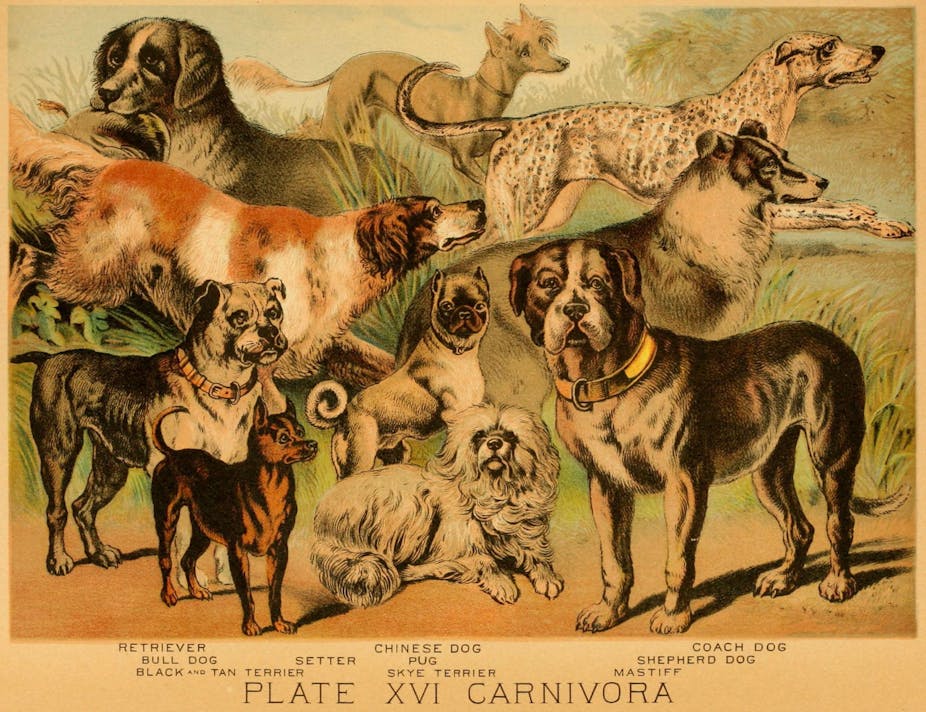Will 2016 be the year the world finally lost interest in the paleodiet? Believe it or not, it’s already happened! ‘Peak-paleo’ passed without notice way back in January 2014.
We’re often a little behind the global trends down-under, so Australia’s own peak-paleo occurred almost two years after the rest of the planet. This might explain why the media here still bends over backwards to give celebrity chef Pete Evans and other prominent paleodieters so much limelight.
Still, it’s been a steady decline in interest ever since, and the paleodiet, like the real Paleolithic Era before it, is on the slow road to extinction. But who’s to blame for its failure to convince us it holds the answers to all our health and lifestyle needs?
I genuinely believe there is something to the idea that we can learn from our evolutionary past about how to live today. It’s just that the paleodiet fad, with its mix of blatant buck making and oddball conspiracy theories, has hijacked any science there may have been behind it.
We can point the finger at the high priests of the paleodiet cult themselves who are, after all, just another segment of the food industry. A sector made up of self-appointed nutrition, health and evolution experts with a disdain for science and the people who conduct it.
In their seemingly ever desperate quest to sell us stuff straight out of the Stone Age, paleodieters have come up with some rather creative food lines.
As we all know, artificially sweetened soft drinks were all the rage in the Paleolithic. Archaeologists have discovered hundreds of fossilised soft drink cans from ancient sites all around the globe.
And remember the furore when the paleopilgrims told us to start feeding our newborns paleo baby formula? There we even calls for paleoparents to be put in jail.
Now we’re told that our pets should be paleopuppies and paleopussies because, as one prominent website puts it, “the consequences of the modern lifestyle are largely the same in pets as in humans”.
In their usual glib way, the advice they dish out for pets is as ill-informed as it is for humans:
A good place to start your research is by looking up what your pet eats in the wild, and slowly introducing those foods into its regular diet, making sure to keep a close eye out for any digestive symptoms.
Through the process of evolution over thousands of years all of the animals we have domesticated, from dogs and cats to sheep, pigs and goats have changed from their wild ancestors.
Take dogs, the first animal we domesticated from wolves during the Paleolithic, perhaps as far back as 40 thousand years ago, and at several places at different times.
Ever since, they’ve been evolving alongside us to live as we do and to eat a diet a lot like our own. Some scientists even think dogs were responsible for domesticating us!
Studies of the dog genome have shown that domestication affected two main kinds of genes: ones affecting dog behaviour and the nervous system and genes involved in digestion and diet.
Through a combination of artificial and natural selection dogs have evolved to eat starch, unlike wolves, which have a largely carnivorous diet. Dogs have five times as many copies of the AMY2B gene which is dedicated to producing starch digesting enzymes in their pancreas.
If we study the various dogs breeds around the globe there’s also a clear pattern where larger numbers of copies of AMY2B are found in locations where agriculture spread during prehistory. The dogs bred by farmers are the best at eating and digesting grains and they have the genes to back it all up.
Dogs eat starch, wolves don’t, but starch from grains is simply not allowed on the paleodiet for humans or pets.
Cats on the other hand have a completely different history of domestication compared to dogs. Cats were domesticated much later, with the earliest examples of moggies found just 10 thousand years ago in Cyprus.
Most of the 30-40 cat breeds seen today were only bred during the last 150 years and before this surge in cat popularity there were only around half a dozen cat breeds recognised globally.
With dogs though, some breeds are thousands, other perhaps even tens of thousands, of years old. They have a very deep ancestry back into the mists of prehistory.
The much younger age for cat domestication means that unlike dogs their diet is much more like their wild precursors. This explains why cats are much more carnivorous than their canine house mates.
The big problem in advocating paleopet food is that our pets are no longer wild animals. If we attempt to replicate their evolutionary past, in complete ignorance of how they lived and ate, we might be doing them a lot more harm than good.

